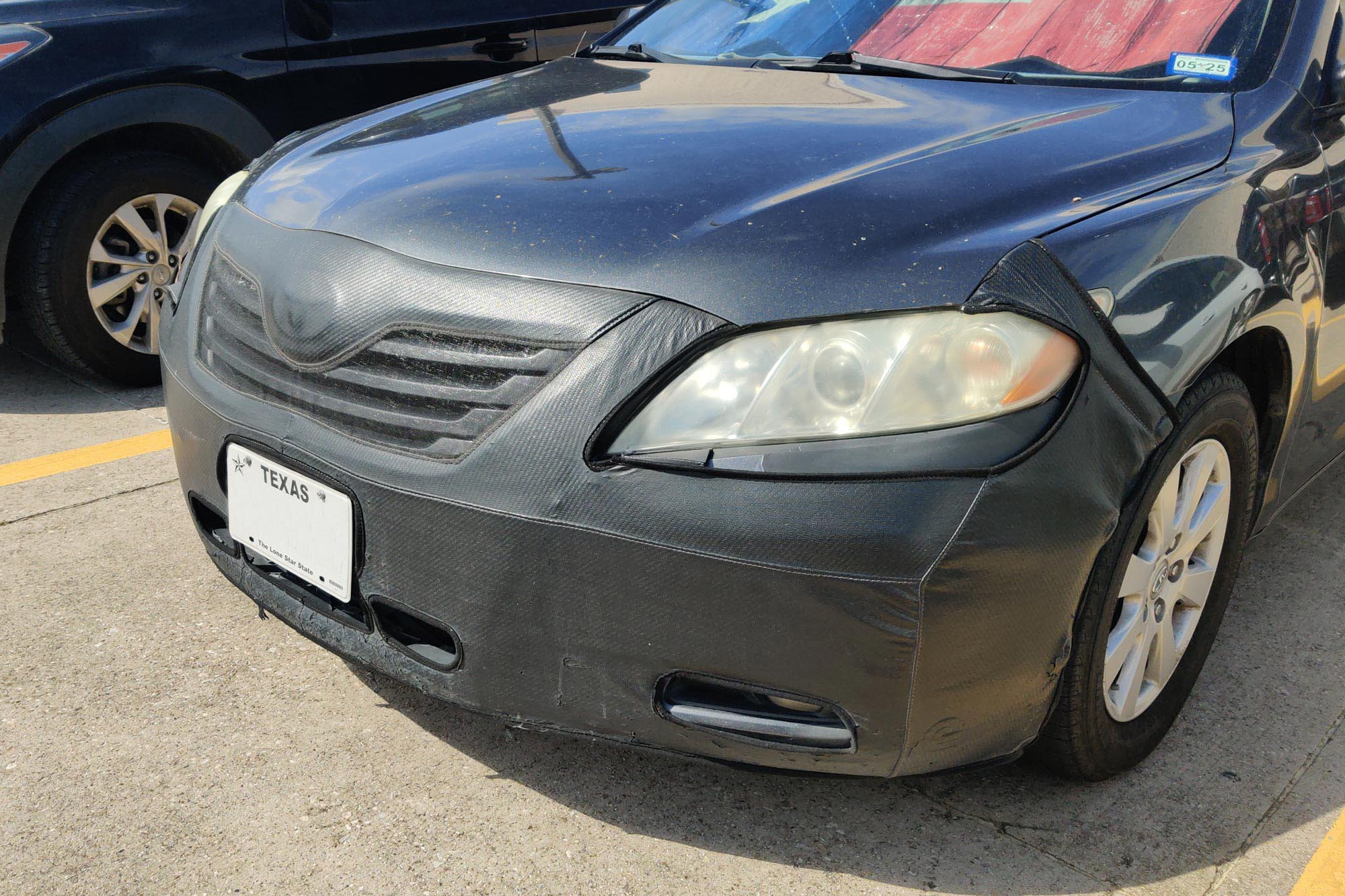What Is a Car Bra?
Why the once popular front-end protector has fallen out of favor.
 Austin Lott | Capital One
Austin Lott | Capital One
Car enthusiasts who were around in the 1980s may remember the so-called car bras. These formerly popular accessories functioned like masks, covering the front ends of vehicles they were strapped to. They were typically made of vinyl and fastened via straps that hooked into clips in the front wheel wells or under the hood.
Most were fitted for specific models with cutouts allowing headlights to peek through. Ostensibly the car bra's purpose was to protect paint from chips and dirt, but it sometimes ended up doing more harm than good.
The Car Bra Wasn't Originally Meant as a Consumer Item
An early record of a car bra comes from an upholsterer based in Southern California named Bill Colgan in the early 1960s. Automotive enthusiast publication The Autopian said that, according to Colgan's history of the car bra, a group of Lockheed engineers who were testing the 356 model for Porsche came into his shop with a car-bra prototype and asked him to make a dozen of them to protect the test cars.
Unlike most cars, rear-engine Porsches didn't have large bumpers or upright grilles in front. With their low, painted noses they were vulnerable to surface damage from projectile debris. Porsche called the protective cover a steinschlagschutzhülle, which translates to stone strike shield. The cover wasn't initially intended to be sold as a consumer item. It was simply used to protect newly built cars as they underwent testing before delivery.
After some experimentation, Colgan delivered a dozen covers, which were successful enough that the Porsche engineers asked for more. Colgan eventually made 150 before stopping the contract to focus on his core upholstery business.
In the 1970s, however, Colgan revived the steinschlagschutzhülle after a group of California-based Porsche owners asked him to make them for their 911s. This time, he put an ad in Road & Track magazine to advertise the newly christened car bra. By 1975, according to The Autopian, other companies had joined the act, and a range of car bras became available for various makes and models.
The Car Bra's Popularity Faded as Owners Discovered Its Downsides
As it turns out, car bras could do more harm than good. The covers did help protect paint from flying rocks, but unless owners regularly removed their car bras for cleaning, dirt and moisture would accumulate around the edges and sometimes work their way under the bra. Subtle movements during driving then rubbed the dirt against the paint, ultimately causing damage. Sometimes the bra itself would even bond to the paint.
Car bras also fell out of favor for aesthetic reasons. Covering the car's nose in what resembled a large Zorro mask disrupted the car's original design. Additionally, car paint fades when exposed to the sun. After long periods, the areas covered by the car bra would appear darker than the rest of the car.
Today There Are Better Ways to Protect Car Paint From Road Debris
Modern technology has made the car bra obsolete. Paint Protection Film (PPF) made by 3M is a thin layer of clear urethane that can be applied to cars without harming the paint and largely performs the same function for which the car bra originally was designed.
PPF is typically applied to a vehicle's front end and other scratch-prone areas, such as rocker panels, wheel arches, door edges, and door-handle cavities.
The urethane acts as a shield between debris and paint. Some of these films are even marketed as having self-healing properties. Minor dings in the urethane can eventually look as though they've been filled in if the material is able to return to its original shape. The film is also said to block UV rays.
Still, the legacy of the car bra endures. In fact, despite a lack of straps, PPF is sometimes called a clear bra.
Written by humans.
Edited by humans.
 Ben Hsu
Ben HsuBen Hsu is a Southern California-based automotive journalist and historian who has specialized in classic Japanese cars for the last two decades. He drives an FJ60 Toyota Land Cruiser and a Subaru SVX. He has also owned countless other vintage and modern vehicles.
Related articles
View more related articles